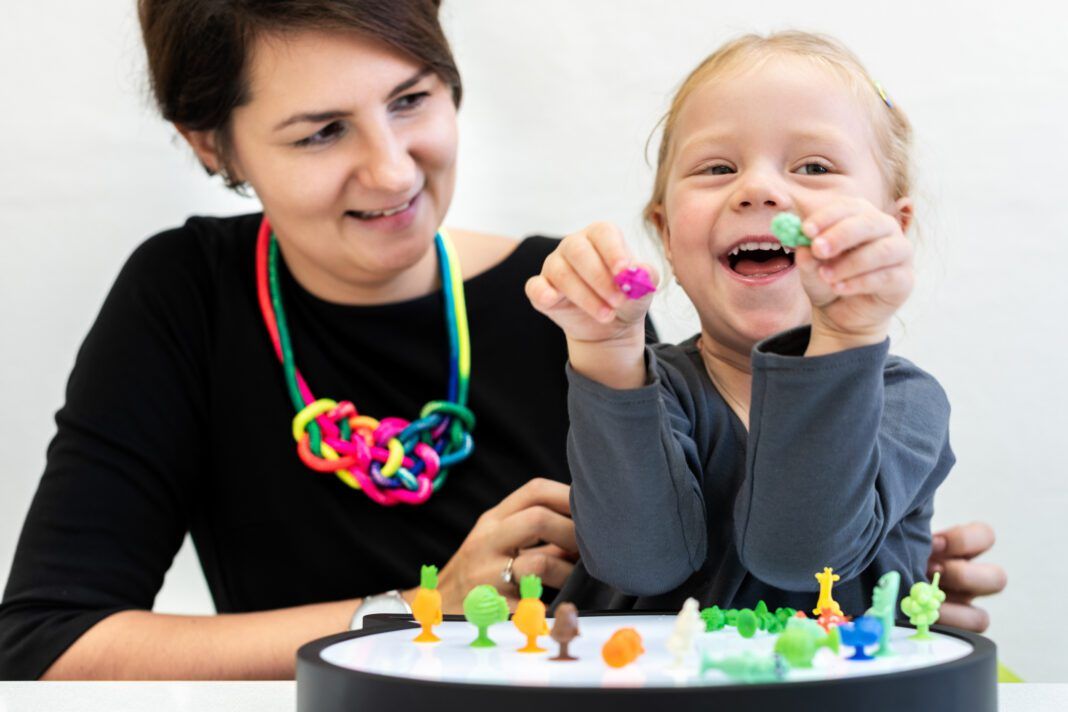Feel the Difference: Highlighting Sensory Processing Awareness Month
October is Sensory Processing Awareness Month, a month to raise awareness, understanding and support for people with sensory processing needs. Sensory Processing Disorder (SPD) makes it difficult to participate in daily activities, affecting children and adults who struggle to process sensory information.
“Children who struggle with sensory processing can often be seen as having behavioral problems when out in public,” explains licensed occupational therapist Adele Butler, who has dedicated much of her career to working with children. “Some may look upon their situation as a parenting problem. In reality, children with SPD have unique needs that can be hard to meet in various environments.”
Sensory systems include auditory, visual, smell, taste, touch, proprioceptive and vestibular. “Some of the more common symptoms include over- or under-responsivity to sensory input,” Butler says. “But before explaining these, it is important to know that two lesser-known sensory systems are often largely involved in SPD: the proprioceptive system and the vestibular system.”
Proprioception is the sense of body position, with sensory receptors in the muscular system and joints. The vestibular system, located in the inner ear, senses head position and movement.
Over-Responsivity and Under-Responsivity
Butler explains that children with over-responsivity symptoms are over-responsive to sensory input from any sensory system. These children may dislike loud noises or cover their ears often. They are more likely to be picky eaters or have difficulty tolerating various clothing fabrics or seems in their clothing. They may squint or close their eyes with flashing lights or visual clutter. They may exhibit poor balance and dislike activities like swinging, climbing and sliding or show fear with movement-based activities.
Children with underresponsivity symptoms have a high threshold for sensory input and often seek out more input to stay regulated. These children often appear hyperactive or are always on the move, Butler says. They may have a high threshold for pain or engage in risky play. Children under-responsive to proprioceptive input may chew excessively on clothing or toys, use excessive force when closing doors, write or color with too much pressure, walk on their toes or push their body into other people or furniture as they try to get more sensory input. Children under-responsive to vestibular input may be constantly moving or always running and enjoy excessive spinning or being upside down.
Sensory-Friendly Activities and Resources
Perhaps you’ve seen sensory-friendly shopping hours listed at your local grocery store or headphones available at a live show. These are sensory-friendly offerings, and thankfully, they are expanding in Baton Rouge.
BREC’s Baton Rouge Zoo is now Certified Sensory Inclusive. Knock Knock Children’s Museum hosts sensory-friendly events and offers weighted lap blankets, sound-reducing headsets and some adaptive devices upon request from the front desk. The Quiet Cabin area also provides a space for children who may need a break from the crowd. East Baton Rouge Parish Libraries offer Sensory Sensitive Time with decreased noise and lighting in the children’s section as well as sensory tools such as fidgets and headphones.
SPD often coexists with other diagnoses, such as autism, anxiety or ADHD. “Sometimes SPD can also be confused for one of these other diagnoses,” Butler explains. She encourages parents to trust their gut and connect with a licensed occupational therapist if they suspect their child may have SPD.
“As a community, understanding sensory processing differences can help these families feel welcome and supported in the community,” Butler says. “In our understanding, we can pass less judgment and provide more comfort to these families as they try to encourage their children to engage in daily activities and outings. We can welcome these families into our social circles and ask if there are ways we can be helpful to their family when gathering together.”












